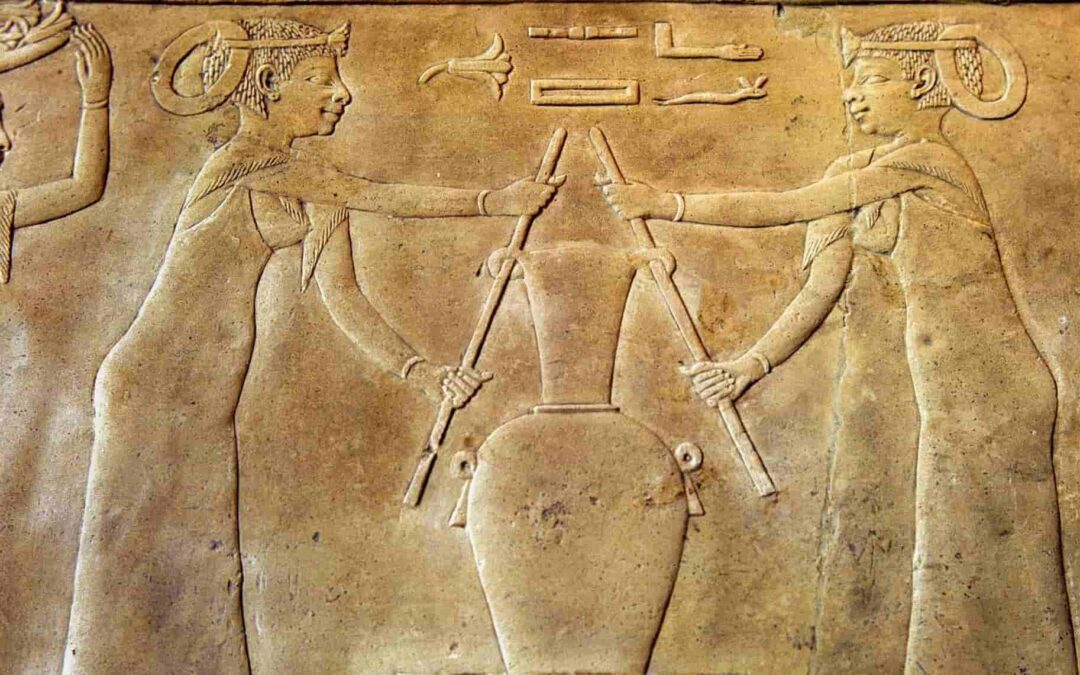
In ancient Egypt, sophisticated perfumes were used for personal care and in religious and funeral rituals.
“When you prosper and found your family, love your wife very much, feed her, dress her, anoint her body with ointments …”.
This recommendation that a father made to his son in the Teachings of Ptahhotep, a collection of moral proverbs of the V dynasty (around 2400 BC), shows the importance of perfumes in the life of the Egyptians from the earliest periods of their history.
Indeed, perfumes were a staple in men’s and women’s personal care. As at present, they were kept in special jars, of which many specimens have been found in numerous New Kingdom tombs and which were made of various materials: fine alabaster, faience – a kind of shiny bluish earthenware – or glass decorated with lines of colors on a preferably dark blue background, to avoid that the effect of light could alter the aromatic oils they contained.
Perfumes were an indicator of presence and social status. Guests at a lavish banquet applied an odorous oil or ointment to their wig, as many tomb paintings show.
But they were also attributed hygienic properties, as a way to dissipate bad odors, and even healing. It was believed that certain fragrances served to purify the air and ward off all kinds of diseases.
The scent of the gods
On the other hand, in Egypt perfumes were closely related to religious practice. In the ceremonies that were carried out in the temples, all kinds of ointments and fumigations were used, made with resins or with compound preparations – such as kyphi or kapet, a type of incense that included raisins among other ingredients -, which were synonymous with purity and had a symbolic meaning in the liturgy.
The historian Plutarch tells that incense was burned in the morning, myrrh at noon and kyphi in the afternoon. The priests also anointed the statues of the gods with various ointments and perfumes.
Likewise, certain perfumes were used in funeral rituals that gave the deceased “the smell of divinity”. Mummies were anointed with perfume to give them life and make them agreeable to the gods.
The quality of the perfumes that were made in ancient Egypt gave the Nile Country great fame throughout the Mediterranean.
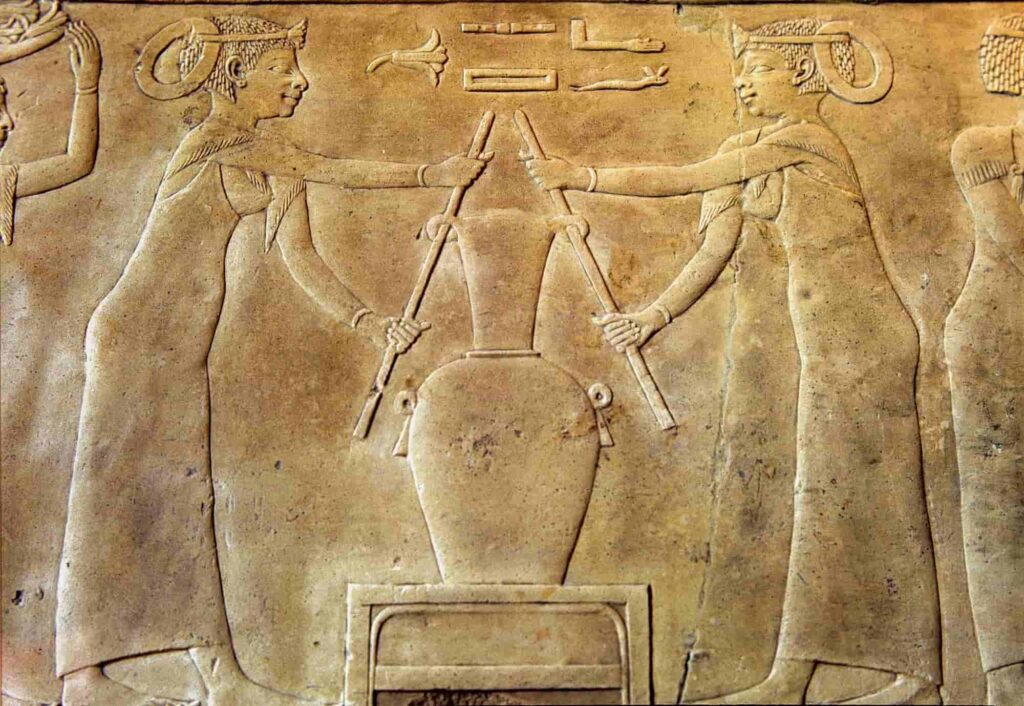
The most precious essence: Pressing lilies by twisting to collect their juice in a container. 4th century BC Louvre Museum, Paris.
Flowers, plants and spices
The Egyptians used native flowers such as lily, iris, myrtle, white lotus, blue lotus and flowers of different varieties of acacia, as well as aromatic plants such as mint, marjoram, dill and fragrant reeds.
Henna flowers, camel thorn root (a type of acacia) and thimbles of the balanito fruit were also used, which were very aromatic.
However, some substances were obtained through expeditions to distant lands, the exchange in foreign markets or the payment of taxes from vassal territories.
The latter formed a very broad chapter, which included frankincense, myrrh, balsam, coniferous resins such as some pines, and turpentine.
Many are difficult to identify in ancient texts, and although the Egyptians distinguished them well, they sometimes grouped them under the generic term “incense”, as a synonym for the odorous resinous substance that exudes its perfume when burned.
To extract the essences, the ancient Egyptians macerated the parts of the plant in a vegetable oil, such as the barnacles that they obtained from the fruit of the balanito, or the baq oil, which they extracted from the ben nut, the fruit of the moringa tree, which grows in Egypt.
Very elaborate techniques
In addition to vegetable oils, the ancient Egyptians used other materials to macerate plants, such as animal, beef or duck fat. It was a technique similar to that of the current enfleurage, which consists of alternating layers of fat and layers of flowers and leaving them to macerate until obtaining the fat impregnated with the essence.
To achieve the persistence of the aroma and delay the evaporation, a fixative was added, such as the date palm spathe, mentioned by Dioscorides. Through these techniques the ancient Egyptians made characteristic perfumes, which made them famous within and outside their borders.
We do not know if the profession of perfumer existed in Egypt, but what is clear from the information provided by the texts, the iconography and the remains found in containers is that there were those who thought what the appropriate fragrance should be for each occasion and calculated the optimal proportion of elements to achieve it.
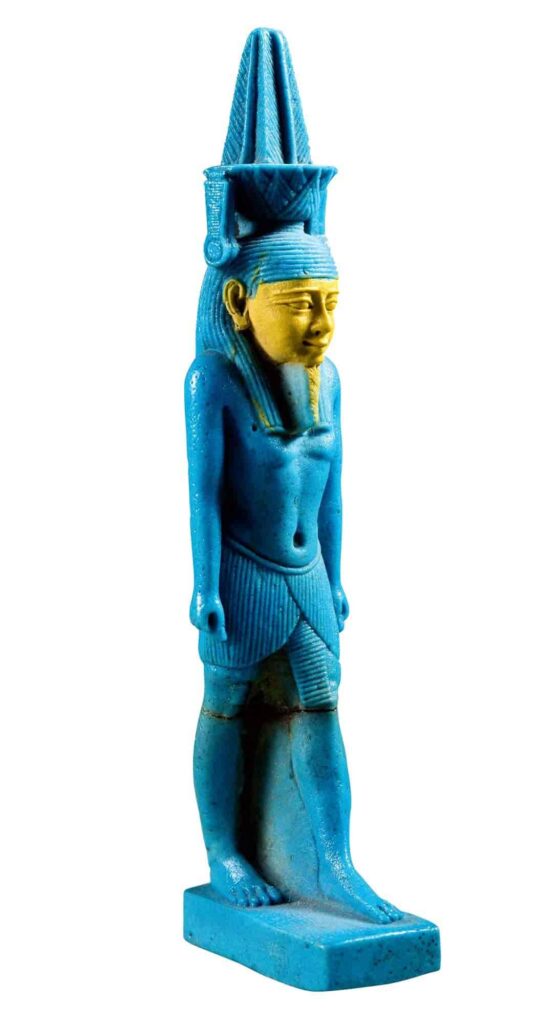
The god of perfumes, Nefertem represented both the first sunlight and the delightful smell of the Egyptian blue lotus flower. Statuette of Nefertum. 7th-4th century BC Louvre Museum, Paris.
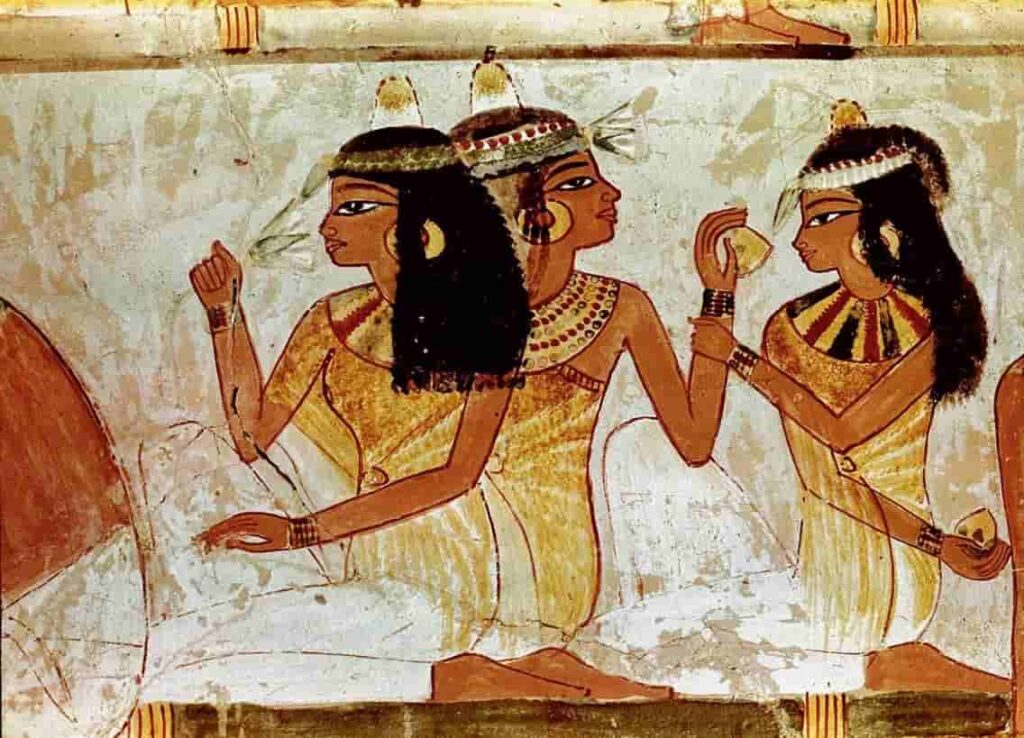
Three women at a banquet, cones of perfume on their wigs. Tomb of Nakht, in Thebes. 18th dynasty.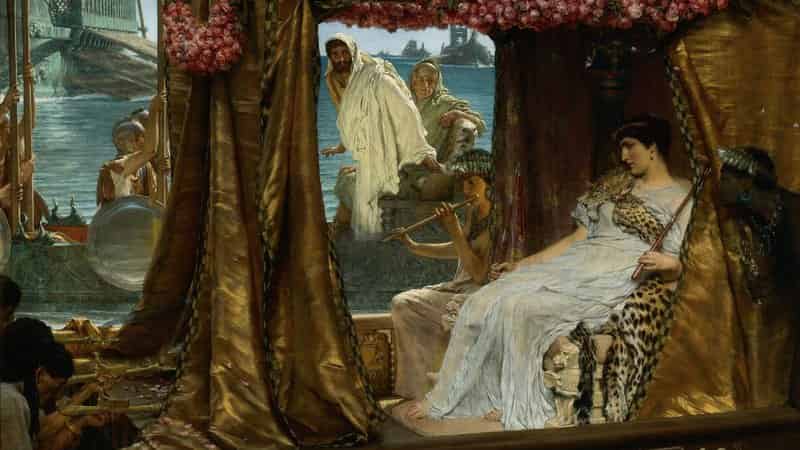
News
Unveiling the Ingenious Engineering of the Inca Civilization: The Mystery of the Drill Holes at the Door of the Moon Temple in Qorikancha – How Were They Made? What Tools Were Used? What Secrets Do They Hold About Inca Technology? And What Does Their Discovery Mean for Our Understanding of Ancient Construction Methods?
In the heart of Cusco, Peru, nestled within the ancient Qorikancha complex, lies a fascinating testament to the advanced engineering prowess of the Inca civilization. Here, archaeologists have uncovered meticulously angled drill holes adorning the stone walls of the Door…
Unveiling the Sun Stone: Aztec Relic from the Reign of Moctezuma II (1502-1520) – What Secrets Does It Hold? How Was It Used? What Symbolism Does It Carry? And What Does Its Discovery Reveal About Aztec Culture?
In the heart of Mexico City, amidst the bustling Plaza Mayor, lies a silent sentinel of ancient wisdom and artistry – the Sun Stone. This awe-inspiring artifact, dating back to the reign of Moctezuma II in the early 16th century,…
Uncovering the Past: Rare 1,000-Year-Old Copper Arrowhead Found – Who Crafted It? What Was Its Purpose? How Did It End Up Preserved for So Long? And What Insights Does It Offer into Ancient Societies?
In the realm of archaeology, every discovery has the potential to shed light on our shared human history. Recently, a remarkable find has captured the attention of researchers and enthusiasts alike – a rare, 1,000-year-old copper arrowhead. This ancient artifact…
Unveiling History: The Discovery of an Old Sword in Wisła, Poland – What Secrets Does It Hold? Who Owned It? How Did It End Up There? And What Does Its Discovery Mean for Our Understanding of the Past?
In a remarkable archaeological find that has captured the imagination of historians and enthusiasts alike, an old sword dating back to the 9th-10th century AD has been unearthed in Wisła (Vistula River) near Włocławek, Poland. This discovery sheds light on the rich…
Unveiling the Hidden Riches: Discovering the Treasure Trove of a Notorious Pirate – Who Was the Pirate? Where Was the Treasure Found? What Historical Insights Does It Reveal? And What Challenges Await Those Who Seek to Uncover Its Secrets?
A group of divers said on May 7 that they had found the treasure of the infamous Scottish pirate William Kidd off the coast of Madagascar. Diver Barry Clifford and his team from Massachusetts – USA went to Madagascar and…
Excavation Update: Archaeologists Unearth Massive Cache of Unopened Sarcophagi Dating Back 2,500 Years at Saqqara – What Secrets Do These Ancient Tombs Hold? How Will They Shed Light on Ancient Egyptian Burial Practices? What Mysteries Await Inside? And Why Were They Buried Untouched for Millennia?
Egypt has unearthed another trove of ancient coffins in the vast Saqqara necropolis south of Cairo, announcing the discovery of more than 80 sarcophagi. The Tourism and Antiquities Ministry said in a statement that archaeologists had found the collection of colourful, sealed caskets which were…
End of content
No more pages to load











